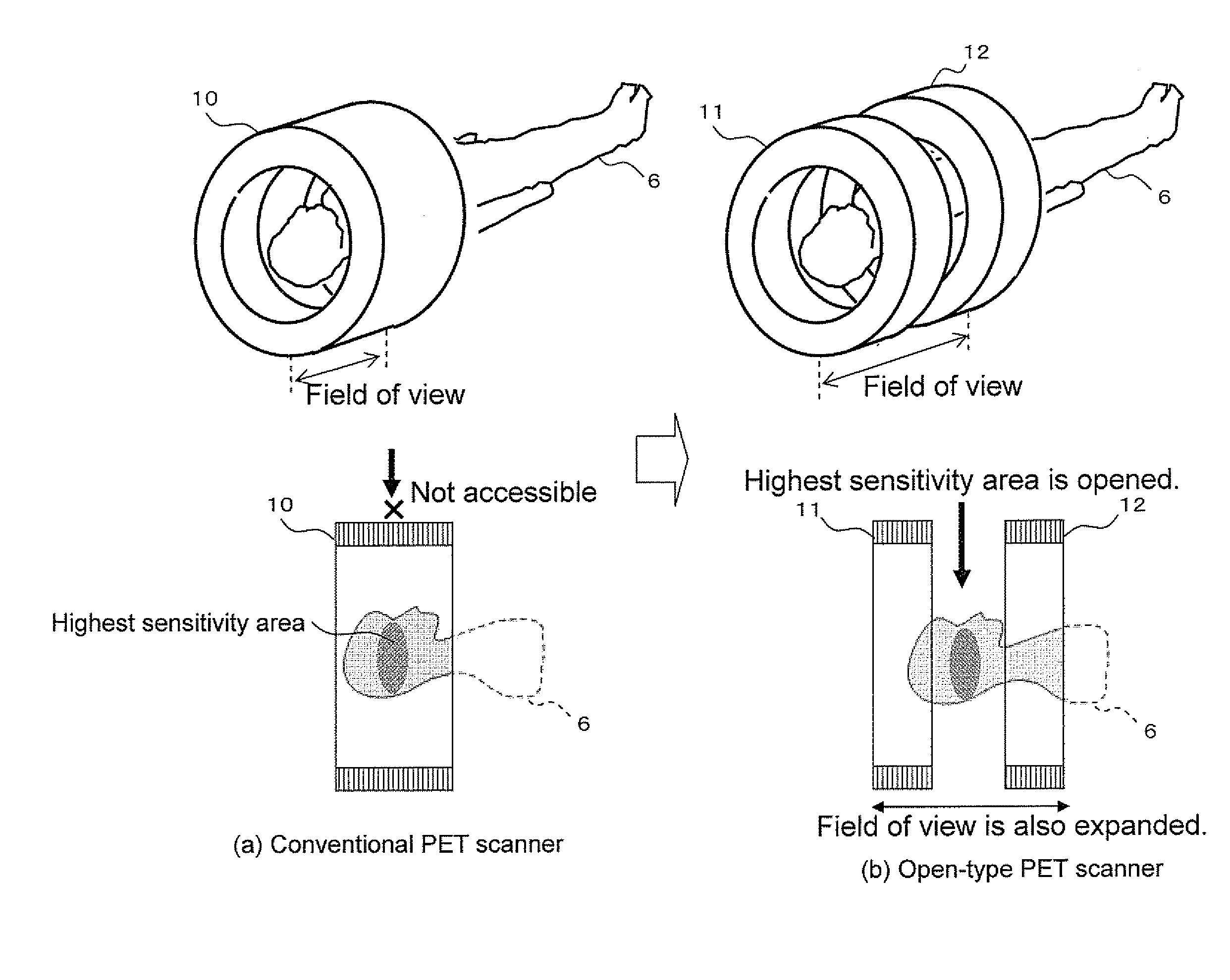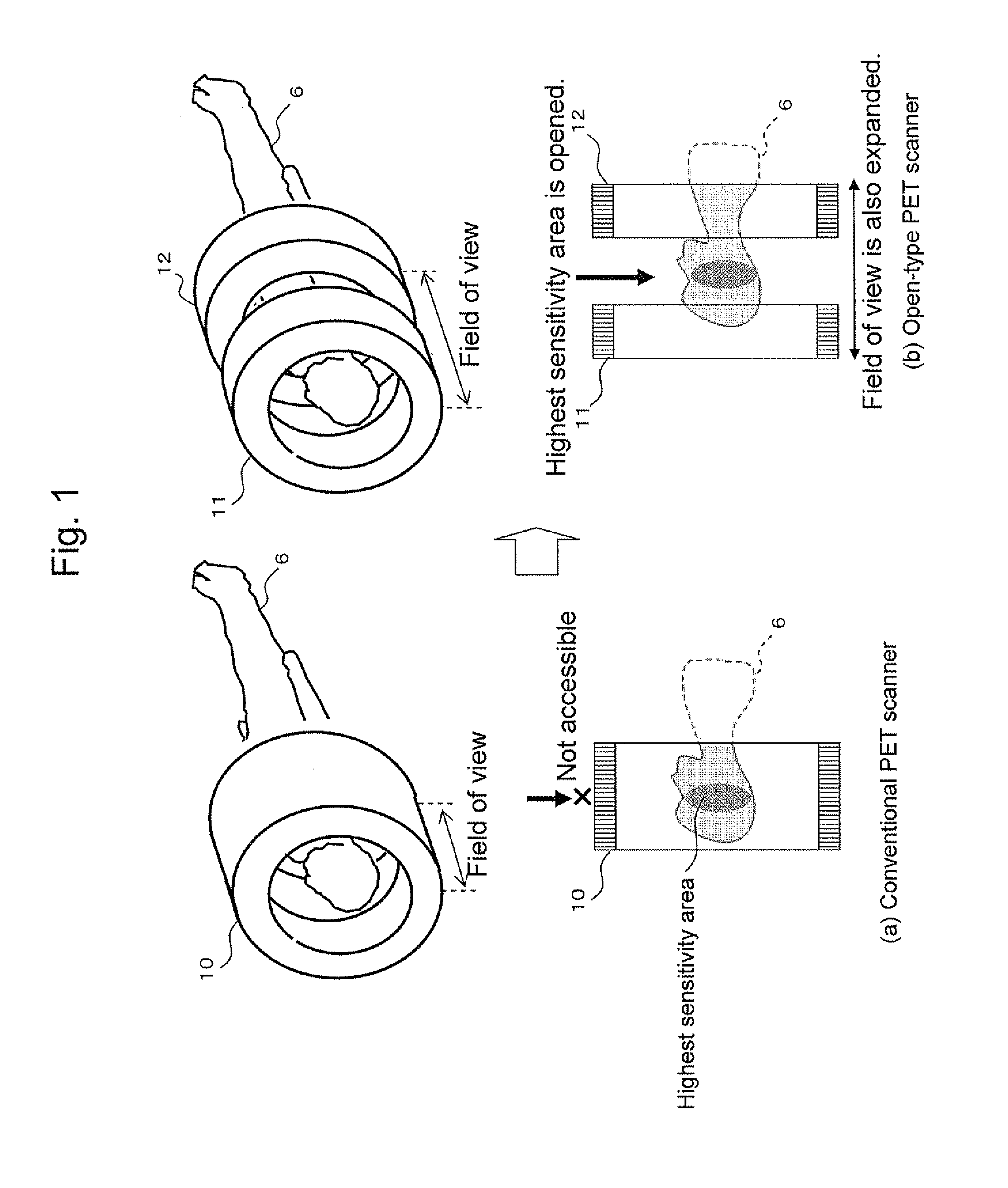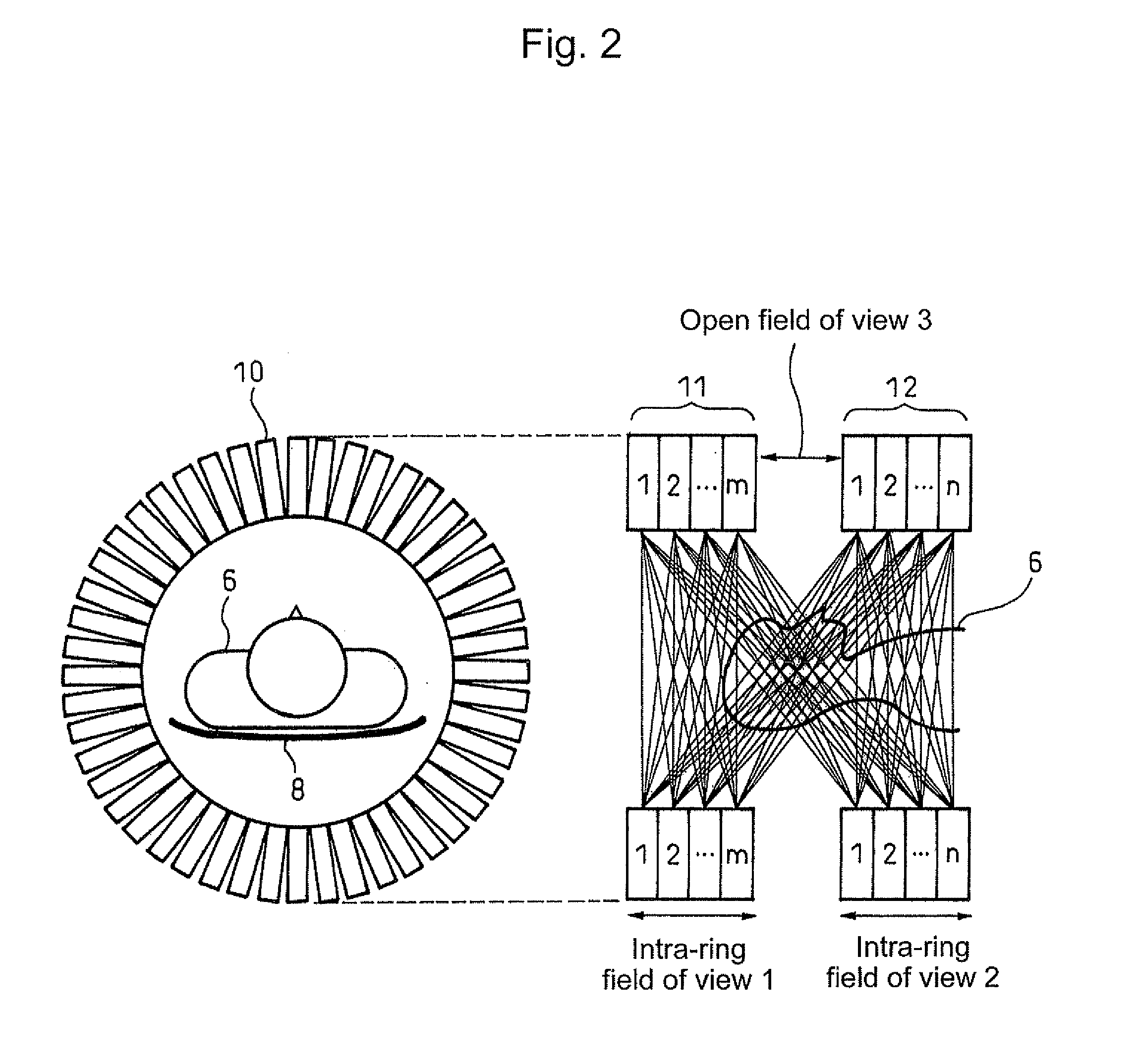Detector-shift type combined radiation therapy/pet apparatus
a combined radiation therapy and cat technology, applied in the field of cat-shift-type combined radiation therapy/pet devices, can solve the problem of not being able to create a precise image of the irradiation field, and achieve the effect of improving the image quality of the entire open space, suppressing local sensitivity drops in the open area, and high s/n
- Summary
- Abstract
- Description
- Claims
- Application Information
AI Technical Summary
Benefits of technology
Problems solved by technology
Method used
Image
Examples
first embodiment
[0063]Next, a description will be given of an embodiment of the present invention where the open PET device is applied to beam monitoring in radiation therapy. FIG. 14 shows the configuration of a Two identical ring-shaped detector rings (space-forming detector rings) 11 and 12 are arranged in parallel as independent gantries (60a, 60b), and a radiation irradiation device 24 is inserted into the space between the detector rings 11 and 12, whereby treatment monitoring of observing one and the same treated area immediately after treatment by PET is implemented.
[0064]Specifically, the embodiment includes the detector rings 11 and 12, gantry covers 60a and 60b which cover the respective detector rings, and a bed 8 on which a patient 6 lies. The gantries are each equipped with wheels 62, and have the function of moving in the direction of the body axis on common or different rails 64.
[0065]A therapy beam 22 produced from the radiation irradiation device 24 passes through the spatial gap...
second embodiment
[0078]Next, the present invention where a detector shift (parallel shift) is applied to spot scanning irradiation will be shown in FIG. 16. The diagram shows the spot scanning irradiation in which the irradiation field is further divided into a plurality of layers of zones parallel to the detector rings. The layers are each scanned and irradiated with the beam spot, moving from one layer to another in succession. With the center of a tumor or other reference position as m0, the reference positions of the left and right detector rings when the center of the open area falls on m0 will be referred to as p0 and q0, respectively. In the spot scanning irradiation, the tumor is scanned with pencil beam irradiation in a short time so that the entire tumor is covered with spot-like irradiation fields. After the irradiation, the detector rings are parallel shifted in the direction of the body axis so as to follow the layer movement of the spot scanning irradiation, whereby the distribution of...
fourth embodiment
[0088]Now, a description will be given of a fourth embodiment which is another mode of operation of the basic two detector rings and radiation irradiation device shown in FIGS. 4 and 5(B).
[0089]On the time chart shown in FIG. 5(B), the detector rings move on the approach to reach the predetermined position (P4) closest to the irradiation field and then immediately move on the return. FIG. 23 shows a time chart where the detector rings reaching the position make a stop until the end of the PET measurement, and then move on the return to their retracted position.
PUM
 Login to View More
Login to View More Abstract
Description
Claims
Application Information
 Login to View More
Login to View More - R&D
- Intellectual Property
- Life Sciences
- Materials
- Tech Scout
- Unparalleled Data Quality
- Higher Quality Content
- 60% Fewer Hallucinations
Browse by: Latest US Patents, China's latest patents, Technical Efficacy Thesaurus, Application Domain, Technology Topic, Popular Technical Reports.
© 2025 PatSnap. All rights reserved.Legal|Privacy policy|Modern Slavery Act Transparency Statement|Sitemap|About US| Contact US: help@patsnap.com



